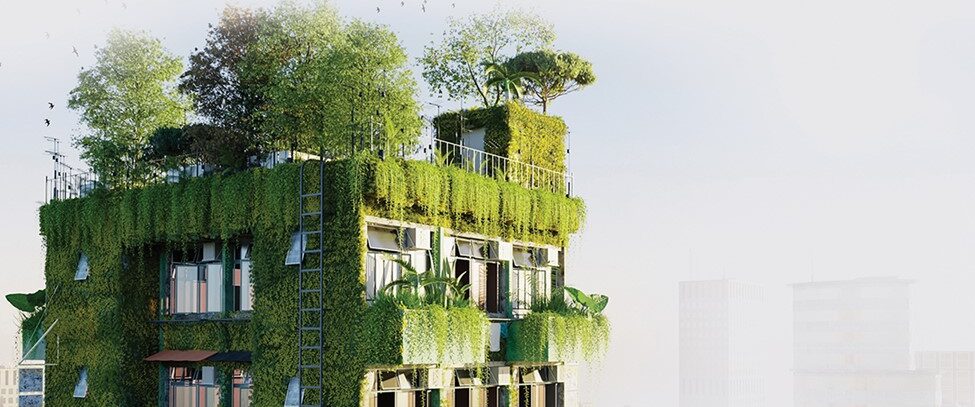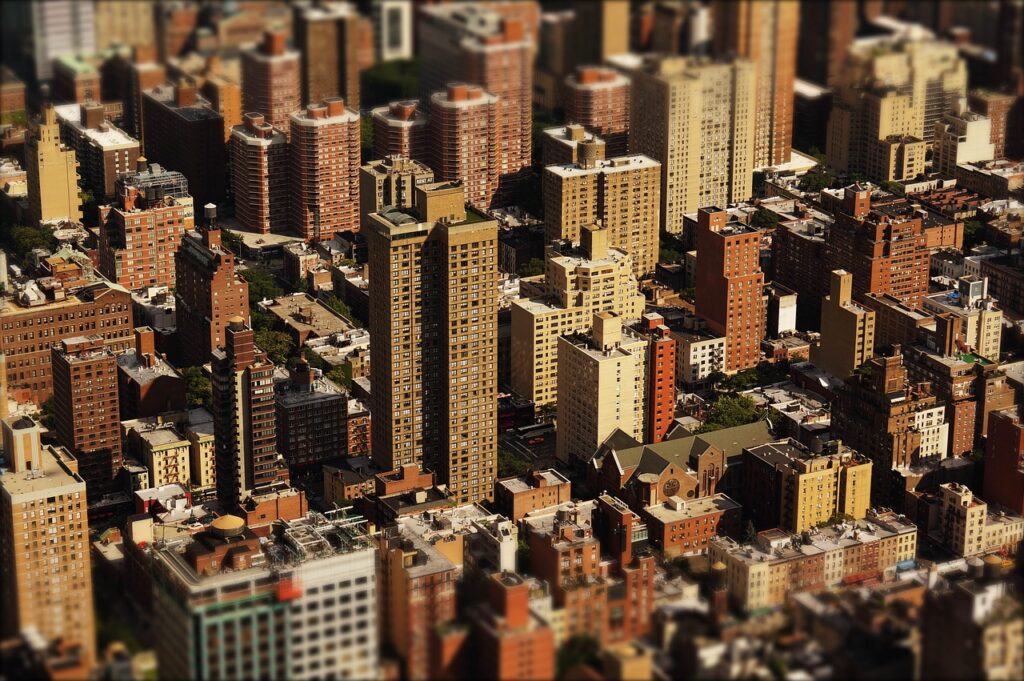The need to cultivate more crops using less natural resources to ensure food security is not new. “The technology and agricultural practices in the last 40 years have led to the degradation of productive land, large greenhouse gas emissions, and extensive water pollution,” said the UN in 2011.
In 2023, food shortages have become a real threat for many countries, particularly in the MENA region, where more than 50% of food is imported, according to the Middle East Council on Global Affairs, a nonprofit think tank. “Food security [is] now a national security [issue] for most countries,” Ciara O’Brien of Modern Farmer, a nonprofit initiative promoting advanced agricultural techniques, said in a July post.
Enter “vertical farming,” where manmade, enclosed, climate-controlled, multistory structures are used to cultivate stacks of crops. O’Brien said its number one advantage is “providing fresh produce in areas that have little food product.”
Real estate developers should take notice of that opportunity. John Levy, director of impact at Franklin Real Asset Advisors, stressed in a June 2022 paper, “Like clean energy infrastructure before it, vertical farming will mature into a defined real asset sector that will be part of well-diversified portfolios.”
The future?
With climate change, population growth, and dwindling supplies of water and arable land worldwide, Levy noted, “demand for sustainable food products [that use] new farming technologies … is growing.”
That reality means agriculture “needs solutions that increase yield, use less water, chemicals, and land, and reduce our dependence on long wasteful and complex food supply chains,” he said.
Vertical farming ticks all those boxes, garnering investor attention. “Private equity and venture capital investors have poured money into vertical farm operations,” Levy said. It “promises to not only increase global food security but also to provide forward-thinking [real estate] investors with strong opportunities.”
According to Pillar Real Estate Advisors, developers could integrate vertical farms into large cities or gated residential or commercial complexes. “Because the crops are growing indoors,” he said, “there’s no need for pesticides or herbicides, and water usage is greatly reduced.” Secondly, because vertical farms are manmade, they can be built near consumers, which “helps reduce food transport costs and carbon emissions.”
Cressy Commercial Real Estate, a management company that builds vertical farms, noted that “growing upward allows for the conservation of space; this results in a higher yield of crops per square foot of land used. An abundance of available green space is no longer required for efficient farming systems.”
Research from CambridgeHOK, a U.K. vertical farm operator with an advisory arm, said vertical farms also could offer “reliable year-round crop production,” eliminating the idea of “seasonal crops. [It also] reduces harvest times and improves volume.” Additionally, crop yields aren’t affected by unexpected adverse weather events, as they are grown in enclosed structures.
Vertical farms also use very little fossil fuel. CambridgeHOK says most vertical farm structures use clean energy sources such as solar and wind. Lastly, vertical farms have low labor costs, as most operations are automated.
Profit for developers?
Real estate companies that build residential and commercial properties likely see the value of their developments increase if they construct vertical farms that grow vegetables and other edible crops. “This technology [is] becoming increasingly relevant in the world of commercial real estate, [adding] value to … properties and attracting.”
One way of increasing the value of properties with vertical farms is to market them as eco-friendly to appeal to environmentally conscious buyers. Also, vertical farms are an “additional amenity” where residents and tenants “have access to fresh, locally grown produce.” Those factors mean sellers and leasers would be open to paying a premium when buying and leasing units in those developments.
Another advantage for real estate companies is that they can build vertical farms on non-attractive parts of the development or parts they don’t want to use.
However, vertical farm builders and operations usually have to take the risk of building their facilities without support from potential customers or partners. “Not all vertical farms begin with a defined offtake partner, whether … a wholesale, grocery, or hospitality partner,” Rick Drescher, Corporate Managing Director for Technical Services at Savills US, a commercial real estate developer, told Vertical Farm Daily in September. “Without these deals in place beforehand, it can be challenging to address the distribution [and] consumer piece of the puzzle.”
To overcome that challenge, Drescher stressed that vertical farm builders and operators should invest in building hype around the facility. That should attract partners and financiers and raise consumer awareness of the advantages of vertical farms and the pros of living close to one.
Another issue vertical farm developers need to tackle is choosing the right balance between training workers, contracting a specialized company to run the facility, and automating the facility’s operations.
Developers of vertical farms could also face an inescapable risk — energy supply. “When you don’t have clarity on the 10 [to] 15-year outlook for energy policies, [vertical farm builders and operators face] take a lot of long-term risks.”
Cressy Commercial Real Estate said the solution is to be clean energy self-sufficient to ensure the reliability of supply and that the farm is more sustainable than the conventional ones.
Scouting locations
ISIFarmer, a vertical farm developer and operator, stressed the “accessibility” of the vertical farm by “staff and customers.” It should also be close to transport routes to quickly serve customers further afield.
The other plot characteristic is that the vertical farm should be in a place that “can be outfitted with artificial lighting.” Additionally, to save on the cost of regulating temperatures, the facility should be in an area with ambient temperatures suited to the cultivated crops for most of the year.
Lastly, the location should be close to a reliable source of clean freshwater and power. “Make sure the location … has access to both, or that you can easily install these systems,” ISIFarmer said. “Water quality is also important, as plants are sensitive to impurities.”
O’Brian of Modern Farmer said vertical farm developers could repurpose abandoned buildings and structures in ideal locations instead of scouting new plots to build a dedicated facility or tearing down an existing building to construct a bespoke vertical farm. “Modifying … existing buildings is less expensive,” he said.
Cressy Commercial Real Estate noted that empty “industrial property” could prove ideal, given it has “plenty of space for large vertical farms.” Additionally, it almost always has direct access to roads and markets.
Others, including Drescher, believe building a bespoke facility makes more sense. “Selecting an existing building for a vertical farm is often impractical,” he said. “It was not designed for that use.”
However, he stressed that if a setup fails in one location today, it could succeed in another or if the project is postponed. “There may be stories of failures,” he said. “But these are the growing pains of the industry,” adding that “vertical farming [is] a long-term endeavor that we need to get right, and I am optimistic [we] can figure it out.”







